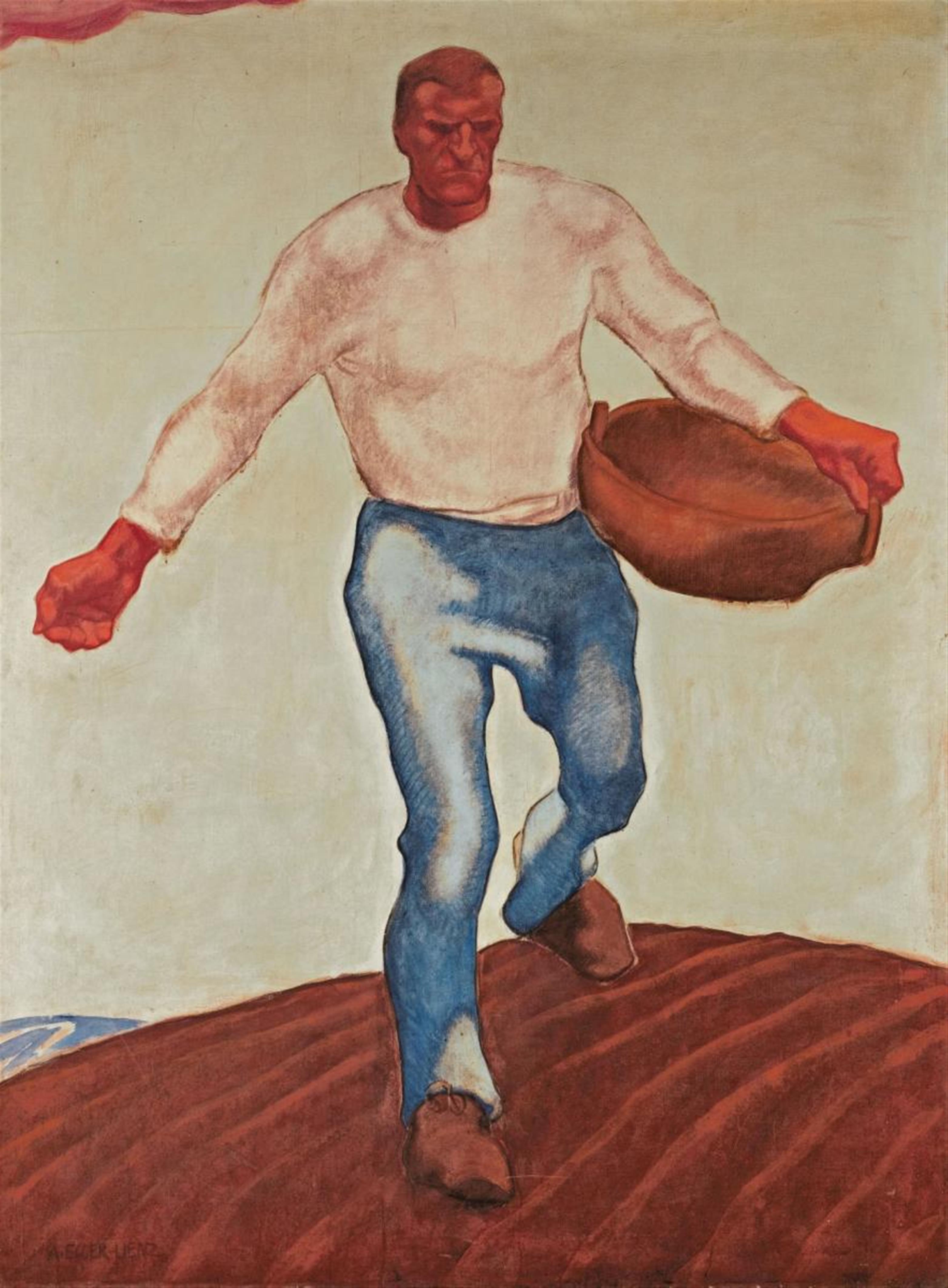Tempera (casein) on canvas 240 x 170 cm, framed. Signed 'A. EGGER-LIENZ' lower left. - Partly with minor linear rubbings.
Not recorded by Hammer; Kirschl M 322
The painting "Der Sämann" (The Sower) is a later repetition of a motif from a monumental triptych entitled "Erde" (Earth) (Kirschl M319), created in 1912. In this forerunner of the painting, the sower is shown on the left, while the centre is occupied by a massive scene of the Ötztal Valley, and a reaper is depicted on the right. The two side panels - the sower and the reaper - had initially been painted by Egger-Lienz in oil on canvas in 1912. Having partially destroyed one painting and overpainted the other, he then decided to repaint the entire triptych, using casein technique. He was hopeful that these new colours would substantially enhance the overall impact. Egger-Lienz, who was still living in Weimar in 1912, had found the model for his painting in Patriasdorf near Lienz. On 21 July 1912 he wrote: "Sowing is more monumental than reaping and therefore more substantial, bigger and richer; this is why big action needs to add a stimulus and growth to form again, but in such a way that the idea turns entirely into form; otherwise, the chap will become a literary figure, as if fabricated by thought painters." (Egger-Lienz to Kunz, Lienz, 21 July 1912, quoted in: Wilfried Kirschl, Albin Egger-Lienz, Das Gesamtwerk, vol. 1, Vienna/Munich 1996, p. 198).
The motif of the sower is repeated in another monumental work (dated 1913, now owned by the Staatsgalerie in Stuttgart) (Kirschl M321). Egger-Lienz lived in Bolzano since September 1913. Twelve of his students, whom he had previously taught in Weimar, set up an independent school of art in neighbouring Klausen, under his leadership. The painting shown here, which Kirschl dated as pre-1914, is highly expressive due to its simplified vocabulary of form and its monumentality. It shows that the artist had a sustained interest in describing the harsh, primaeval everyday life of the peasantry. His focus was on the clearly isolated figure of the sower, shown here as strong, determined, extremely healthy and yet very true to life. Although the colours are more discreet, the earthy tones of the painting underline the sower's weighty, dignified charisma. In this way the sower becomes a de-individualised and timeless symbol of life. Egger-Lienz continued to vary his motifs from everyday peasant life several times until the mid-1920s. What was behind the monumental format was his desire to combine pictorial art and architecture.
Catalogue Raisonné
Not recorded by Hammer; Kirschl M 322
Provenance
Acquired by the previous owner from Galerie Thannhauser, Munich, (1921), since then in family possession
Literature
Wilfried Kirschl, Albin Egger-Lienz, Das Gesamtwerk, vol. 1, Wien/München 1996, p. 198 - 202 with colour illus.
Exhibitions
London 2011 (Sotheby's), European Paintings of the 19th Century, 22 Nov. 2011, cat. no. 6 with colour illus.

